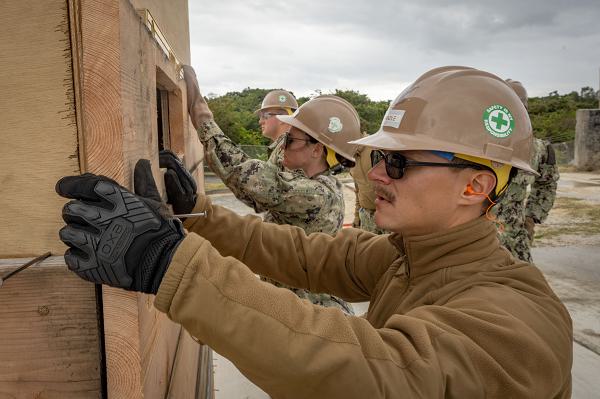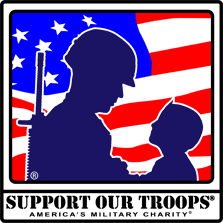
Okinawa, Japan. (January 21): In this photo by Petty Officer 1st Class Austin Ingram, Seabees with Naval Mobile Construction Battalion 3 (NMCB3) show off their construction skills while building bunkers. Based at Port Hueneme, California, NMCB3 can trace its heritage to the early days of World War II. At that time, the Navy needed construction workers to build advance bases in combat zones, likely under enemy fire. The Navy created four Construction Battalions or “CBs” (hence the nickname "Seabees") to build roads, airfields, barracks, and medical facilities.
At the start of the war, senior construction personnel were hired who were willing to adapt their civilian skills to military needs. As such, they were given more latitude to innovate and adapt their approaches to military chores which drew some teasing from by-the-book Marines. By war’s end, these legendary construction workers had built four hundred bases in the Atlantic and Pacific theaters and their efforts were vital to allied victory.
Unlike civilian construction crews, the Seabees are trained to defend themselves against enemy attack. And fight they did, right from the beginning. On August 7, 1942, the Marines landed on Guadalcanal in the Solomon Islands in what became the first major Allied land offensive against Japan.
The key to the invasion was seizing and holding Henderson Field, a vital airfield to land supplies and reinforcements on the island. Recognizing this, the Japanese were determined to recapture the airfield and drive the Americans into the sea. Coming ashore with the Marines was the 6th Naval Construction Battalion to repair Henderson Airfield and other facilities after repeated enemy assaults. The Seabees filled potholes while fighting off the Japanese to keep the airfield running, greatly impressing the Marines. By holding the airfield, the Americans were able to bring in reinforcements that eventually drove the imperial forces from the island.
After the battle, the Marines had developed a mutual respect and fellowship with these “Fighting Seabees” and they no longer teased the older men. In response, the Seabees bestowed “Junior Seabee” badges to worthy Marines and their closeness through shared hardships and mutual respect continues today.


